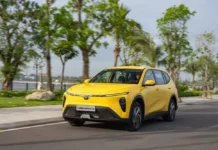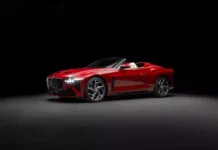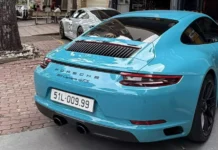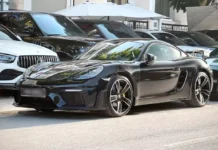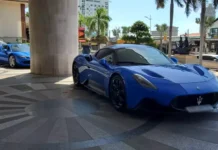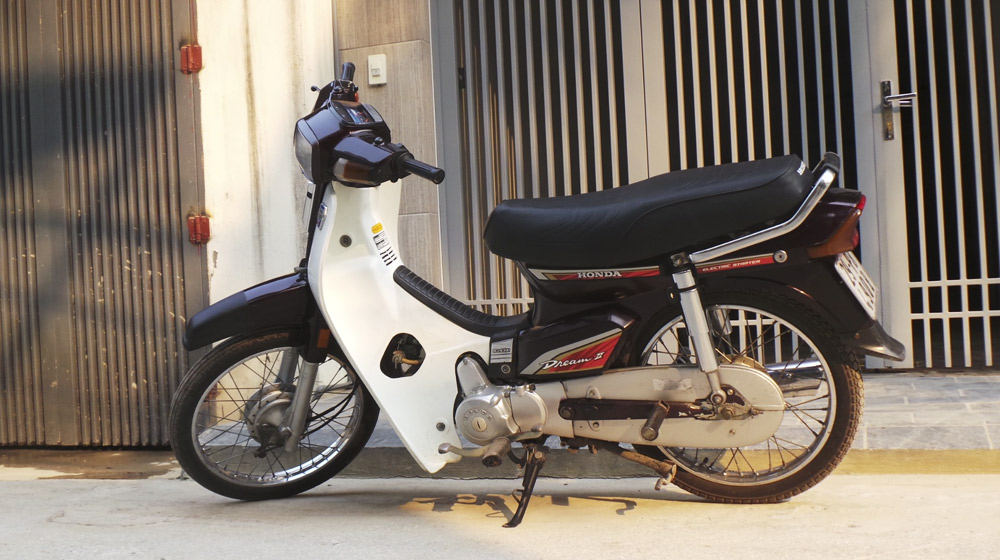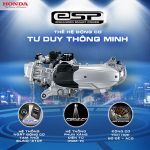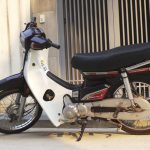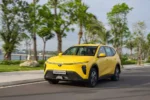In the early 1990s, production of the Dream motorcycle began in Thailand. The first batches of Dream were imported into our country around 1992, with prices ranging from 8 to 10 gold bars. As the car held significant value, it was considered to be the ultimate possession for the Vietnamese people at that time. Therefore, owners of the Dream took great care to preserve and only used it on special occasions.
The car quickly became admired and was seen as a symbol of wealth and power.
Around 1994-1995, the Dream had two versions: the pink sticker (1993) and the fire sticker (1994). The pink sticker car was priced at around 25-27 million VND (equivalent to 4.5 million VND/gold bar), while the fire sticker car was priced at around 28-30 million VND. During this period, the price of gold was not fixed, so sellers often demanded cash payment.
By 1996, the value of the car was approximately 6 gold bars (with a gold price of 5.9 million VND/tael). At that time, the value of the car was equivalent to a large piece of land in the suburbs.
In 1997, the popularity of the Dream decreased, and its price ranged around 30 million VND. This was due to Honda receiving permission to invest in Vietnam in 1996. The company’s initial move was to establish a production line for the Dream II model.
In December 1997, the first Honda Super Dream model was introduced in Vietnam by Honda Vietnam. It was priced lower than the Thai Dream, making it accessible to a broader range of people. Despite this, the Thai Dream continued to be favored by many buyers until 2000 due to the preference for imported and superior-quality vehicles.
Later, under the pressure of competition from domestic products, the Thai Dream had to reduce its prices. In 2001, the price of the Thai Dream decreased from 28-29 million VND/car to 26 million VND, while the Vietnamese Dream was sold at 24.5 million VND.
In 2013, facing declining sales, Honda Vietnam decided to redesign the Dream, giving it a nostalgic style and incorporating details reminiscent of the Angel model from SYM. However, this change in style, taking a step back, and attempting to popularize a legend caused the Dream to lose its appeal.
The Honda Dream is known by that name in the Thai market. In other Southeast Asian countries, the motorcycle is referred to by different names such as Astrea in Indonesia and EX5 Dream in Malaysia. It is a 4-stroke, 100cc engine motorcycle known for its engine durability and classic design.
Unfortunately, as more improvements were made, the legendary Dream lost its charm after almost a quarter of a century since its introduction.
Sources:
– [Honda Super Dream adds new color, priced at 18.99 million VND](https://autodaily.vn/honda-super-dream-them-mau-moi-gia-1899-trieu-dong/)
– [Honda Dream – the path to becoming a ‘dream’](https://autodaily.vn/honda-dream-con-duong-tro-thanh-giac-mo/)
Anh Duc (TTTD)
Honda CBR150R – The Top Choice in the 150cc Sportbike Segment
With a sporty and aggressive design reminiscent of its big brother, the CBR1000RR-R Fireblade, yet maintaining the maneuverability of a city sports bike, along with outstanding safety features and the most attractive price in its segment, the Honda CBR150R is capturing special attention from Vietnamese bikers.




